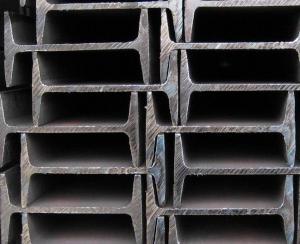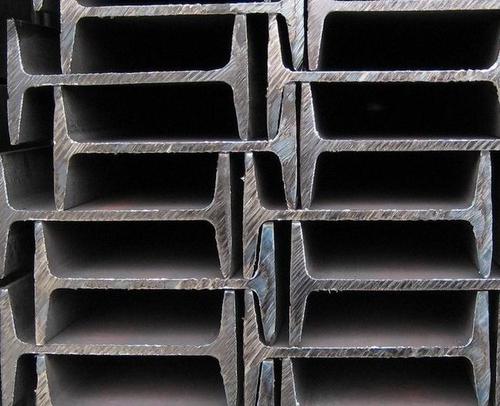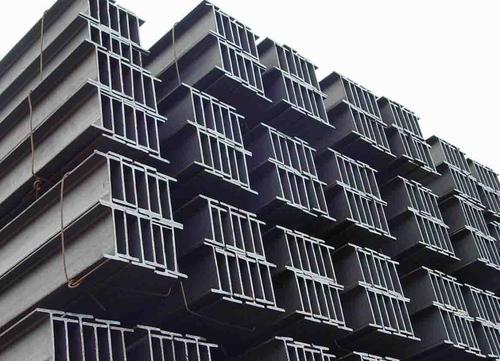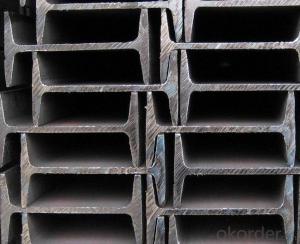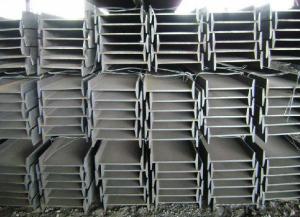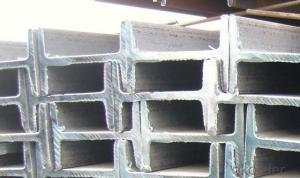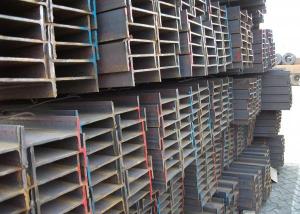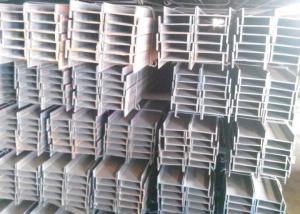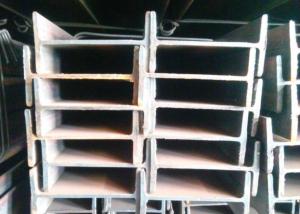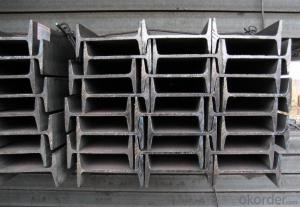High Quality IPE Beam with Material Grade GB-Q235
- Loading Port:
- Tianjin
- Payment Terms:
- TT OR LC
- Min Order Qty:
- 25 m.t.
- Supply Capability:
- 10000 m.t./month
OKorder Service Pledge
OKorder Financial Service
You Might Also Like
Product Description:
OKorder is offering high quality Hot Rolled Steel I-Beams at great prices with worldwide shipping. Our supplier is a world-class manufacturer of steel, with our products utilized the world over. OKorder annually supplies products to European, North American and Asian markets. We provide quotations within 24 hours of receiving an inquiry and guarantee competitive prices.
Product Applications:
1. Supporting members, most commonly in the house raising industry to strengthen timber bears under houses. Transmission line towers, etc
2. Prefabricated structure
3. Medium scale bridges
4. It is widely used in various building structures and engineering structures such as roof beams, bridges, transmission towers, hoisting machinery and transport machinery, ships, industrial furnaces, reaction tower, container frame and warehouse etc.
Product Advantages:
OKorder's Steel I-Beams are durable, strong, and resist corrosion.
Main Product Features:
· Premium quality
· Prompt delivery & seaworthy packing (30 days after receiving deposit)
· Corrosion resistance
· Can be recycled and reused
· Mill test certification
· Professional Service
· Competitive pricing
Product Specifications:
1. Invoicing on theoretical weight or actual weight as customer request
2. Standard: EN10025, GB Standard, ASTM
3. Grade: Q235B, Q345B, SS400, ASTM A36, S235JR, S275JR
4. Length: 5.8M, 6M, 9M, 12M as following table
5. Sizes: 80mm-270mm
Dimensions(mm) | |||||
h | b | s | t | Mass Kg/m | |
IPE80 | 80 | 46 | 3.80 | 5.20 | 6.00 |
IPE100 | 100 | 55 | 4.10 | 5.70 | 8.10 |
IPE120 | 120 | 64 | 4.80 | 6.30 | 10.40 |
IPE140 | 140 | 73 | 4.70 | 6.90 | 12.90 |
IPE160 | 160 | 82 | 5.00 | 7.40 | 15.80 |
IPE180 | 180 | 91 | 5.30 | 8.00 | 18.80 |
IPE200 | 200 | 100 | 5.60 | 8.50 | 22.40 |
IPE220 | 220 | 110 | 5.90 | 9.20 | 26.20 |
IPE240 | 240 | 120 | 6.20 | 9.80 | 30.70 |
IPE270 | 270 | 135 | 6.60 | 10.20 | 36.10 |
FAQ:
Q1: Why buy Materials & Equipment from OKorder.com?
A1: All products offered byOKorder.com are carefully selected from China's most reliable manufacturing enterprises. Through its ISO certifications, OKorder.com adheres to the highest standards and a commitment to supply chain safety and customer satisfaction.
Q2: How do we guarantee the quality of our products?
A2: We have established an advanced quality management system which conducts strict quality tests at every step, from raw materials to the final product. At the same time, we provide extensive follow-up service assurances as required.
Q3: How soon can we receive the product after purchase?
A3: Within three days of placing an order, we will begin production. The specific shipping date is dependent upon international and government factors, but is typically 7 to 10 workdays.
Images:
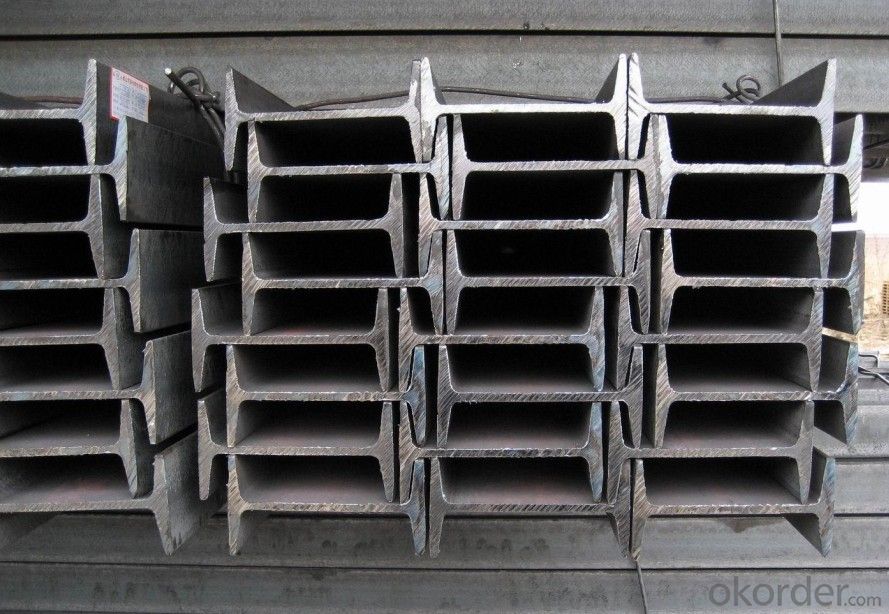
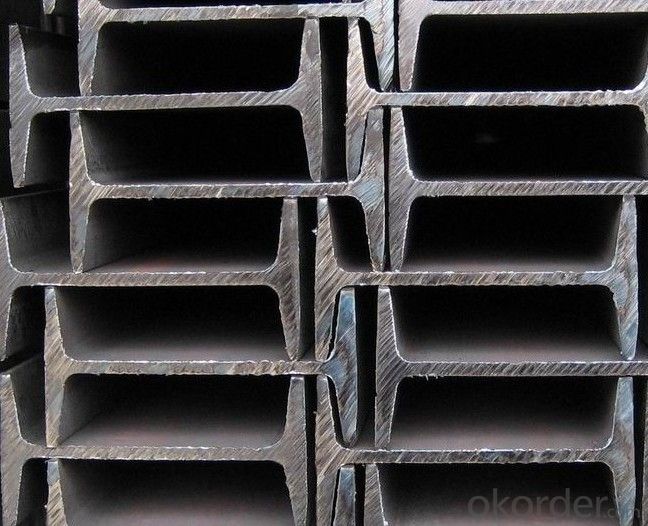
- Q: Can steel I-beams be used for column supports?
- Yes, steel I-beams can be used for column supports. Steel I-beams are commonly used for structural support in construction projects, including as column supports. They have excellent load-bearing capabilities and are known for their strength and durability. Steel I-beams provide structural stability and can handle heavy loads, making them a suitable choice for column supports in buildings and other structures. Additionally, steel is fire-resistant, which adds to its suitability for use in column supports.
- Q: Can steel I-beams be used in coastal areas prone to saltwater exposure?
- Yes, steel I-beams can be used in coastal areas prone to saltwater exposure. However, they need to be properly treated and coated to protect them from corrosion caused by the saltwater. This is typically done through galvanization or the use of corrosion-resistant materials. Regular maintenance and inspections are also necessary to ensure the beams remain in good condition over time.
- Q: How do steel I-beams perform in high-wind bridge applications?
- Steel I-beams perform well in high-wind bridge applications due to their inherent strength, rigidity, and resistance to bending and torsion. The shape of I-beams allows for efficient load distribution, reducing the risk of structural failure under strong wind forces. Additionally, steel's high tensile strength enables I-beams to withstand the dynamic loads caused by wind gusts, ensuring the stability and safety of the bridge.
- Q: What are the typical applications of steel I-beams?
- Steel I-beams are widely utilized in construction and structural engineering due to their robustness and adaptability. Their strength and versatility make them a popular choice in a variety of applications, including: 1. Construction of buildings: I-beams serve as crucial load-bearing elements in building construction, providing the necessary support and stability to the structure. They are commonly employed in constructing columns, beams, and floor joists. 2. Bridges: Due to their capacity to span long distances and support heavy loads, steel I-beams are frequently employed in bridge construction. They are commonly used as bridge girders, providing the required strength and durability. 3. Industrial structures: In the construction of industrial structures like warehouses, factories, and power plants, steel I-beams play a vital role. They provide the essential structural framework to support heavy machinery, equipment, and storage systems. 4. Mezzanines and platforms: In warehouses and commercial buildings, I-beams are commonly utilized to construct mezzanines and platforms. These provide a sturdy and dependable structure for elevated storage, office spaces, or additional work areas. 5. Architectural designs: Steel I-beams are also employed in architectural designs to create unique and visually striking structures. They can be utilized to create open-concept spaces, cantilevered structures, or dramatic rooflines, enhancing both the aesthetic appeal and structural integrity of the design. In summary, steel I-beams are indispensable components in a multitude of construction projects that require strength, durability, and load-bearing capabilities. Their versatility and capacity to withstand heavy loads make them a favored choice in the construction industry.
- Q: How do steel I-beams perform in terms of deflection and sagging?
- Steel I-beams are known for their exceptional performance in terms of deflection and sagging. Due to their structural integrity and high strength-to-weight ratio, steel I-beams are capable of withstanding heavy loads without significant deflection or sagging. This allows them to provide reliable support and stability in various construction applications, making them a popular choice for structural beams in buildings, bridges, and other load-bearing structures.
- Q: How do steel I-beams perform in terms of impact insulation?
- Steel I-beams are not typically used for impact insulation purposes. They are primarily used for structural support in construction projects. However, due to their rigid and dense nature, they may provide some level of impact resistance. In the event of an impact, steel I-beams are designed to withstand the force and distribute it along their length, minimizing the impact's effect on the surrounding structure. Nonetheless, their ability to absorb or dampen impact energy is limited compared to materials specifically designed for impact insulation, such as foam or rubber. If impact insulation is a critical requirement, it is advisable to explore other materials or methods specifically designed for this purpose.
- Q: How are steel I-beams used in multi-story buildings?
- Steel I-beams are commonly used in multi-story buildings because they provide structural support and stability. These beams are often embedded into the building's framework, allowing them to bear heavy loads and distribute weight evenly across multiple floors. This makes them essential for constructing taller structures as they can withstand the forces of gravity, wind, and seismic activity, ensuring the building's integrity and safety.
- Q: Can steel I-beams be used in residential additions or extensions?
- Certainly, residential additions or extensions can indeed incorporate steel I-beams. The utilization of steel I-beams in construction is widespread owing to their robustness and endurance. These beams offer crucial structural reinforcement and aid in the even distribution of a building or addition's weight. By employing steel I-beams in residential projects, one can achieve spacious floor plans and wider spans, as they possess the capacity to bear heavier loads compared to conventional wooden beams. Furthermore, steel I-beams exhibit resistance against warping, sagging, and rotting, rendering them a dependable option for enduring residential additions or extensions.
- Q: Are steel I-beams suitable for long-span bridges?
- Yes, steel I-beams are suitable for long-span bridges. They have high strength-to-weight ratio and can efficiently carry heavy loads over long distances, making them a popular choice for constructing long-span bridges.
- Q: Can steel I-beams be used in retail or commercial building construction?
- Yes, steel I-beams can be used in retail or commercial building construction. Steel I-beams are commonly used in construction due to their strength and durability. They provide excellent structural support and can withstand heavy loads, making them ideal for commercial buildings where large spans and open floor plans are required. Steel I-beams also offer versatility in design as they can be easily fabricated and connected to form various shapes and structures. Additionally, steel is a sustainable and environmentally-friendly material, making it a popular choice in modern construction practices. Overall, steel I-beams are a reliable and efficient option for retail or commercial building construction.
Send your message to us
High Quality IPE Beam with Material Grade GB-Q235
- Loading Port:
- Tianjin
- Payment Terms:
- TT OR LC
- Min Order Qty:
- 25 m.t.
- Supply Capability:
- 10000 m.t./month
OKorder Service Pledge
OKorder Financial Service
Similar products
Hot products
Hot Searches
Related keywords


